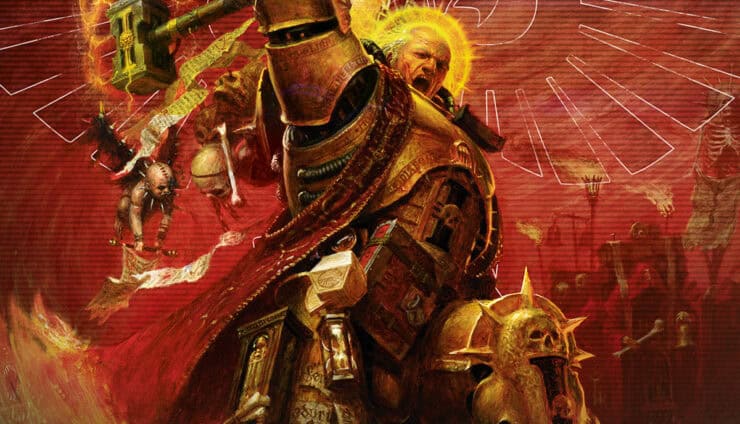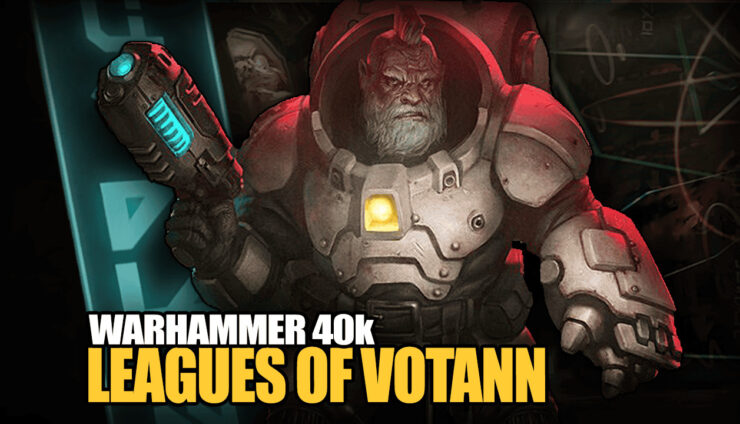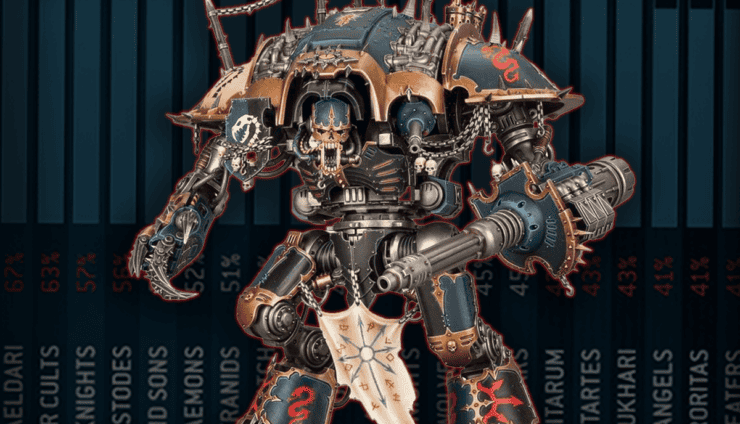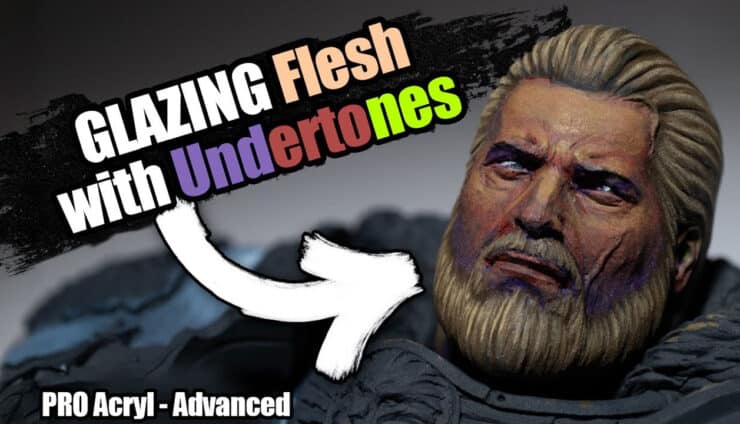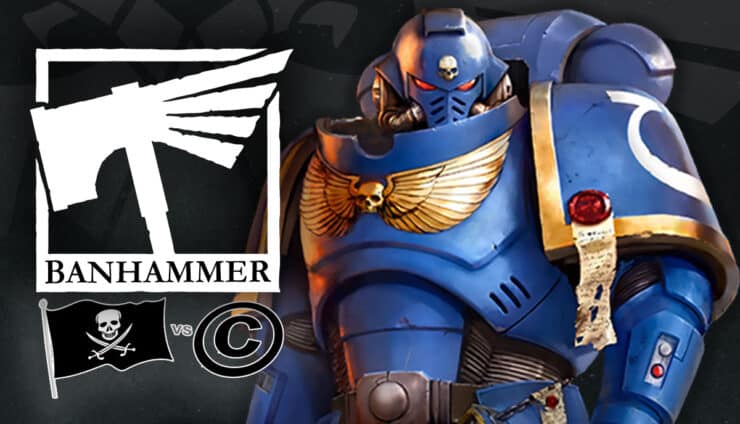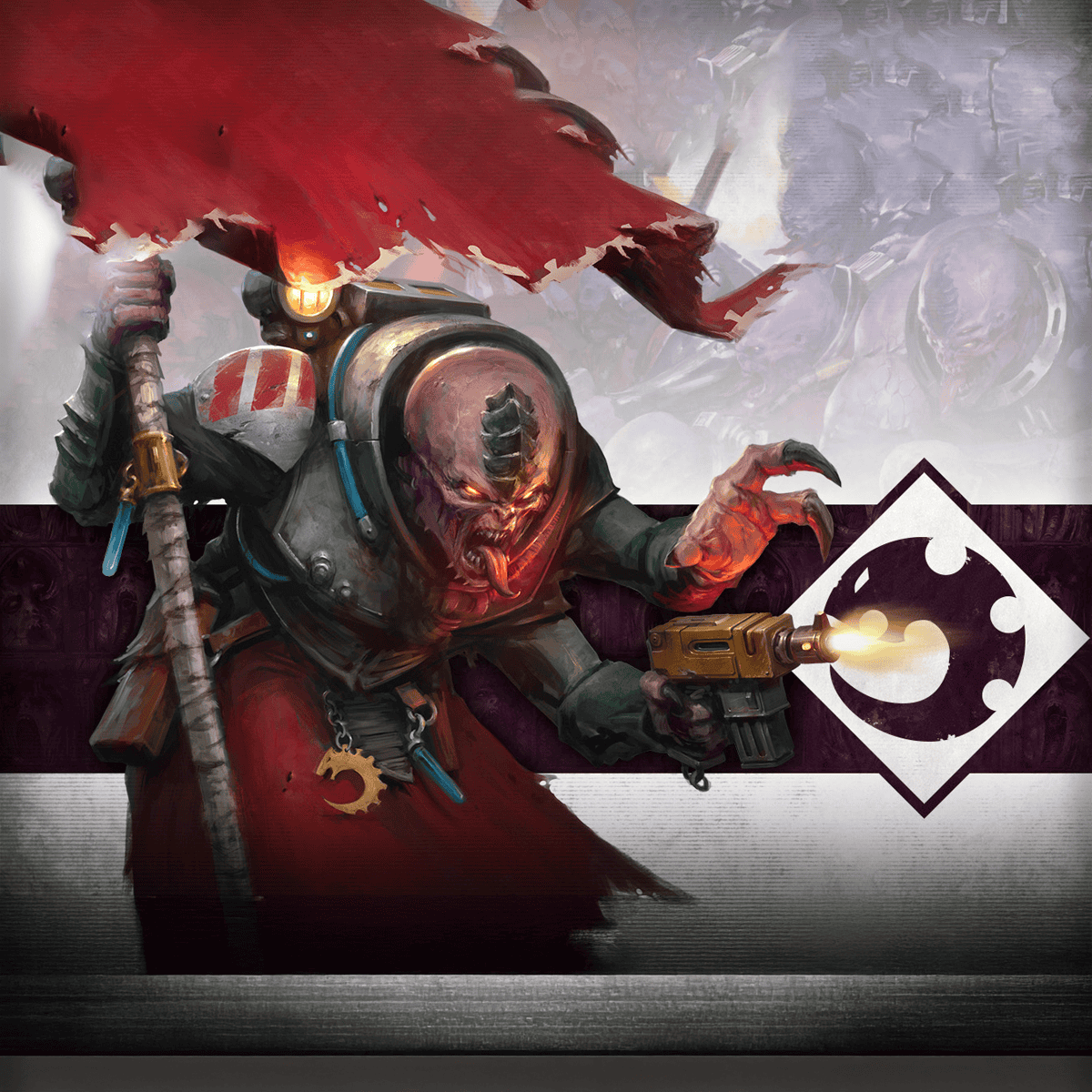 Discover the intricate playstyles, lore, and strategies (and maybe how they are defeated) of the Genestealer Cult army in Warhammer 40k, from ambush tactics to the combat patrol.
Discover the intricate playstyles, lore, and strategies (and maybe how they are defeated) of the Genestealer Cult army in Warhammer 40k, from ambush tactics to the combat patrol.
Updated December 27th, 2024, by Rob Baer with the latest information and links.
Ready to crack open the secrets of Warhammer 40k’s most cunning faction? The Genestealer Cult army isn’t just about outsmarting your opponent—it’s a masterclass in orchestrated chaos. From shadowy ambushes that throw your enemy into disarray to mind-bending psyker powers that shift the tides of battle, these subterranean schemers have a playbook like no other.
Whether you’re fine-tuning your tactical prowess, reading up on lore, or just curious about how these hive-mind rebels dominate the tabletop (or how the Genestealer Cults can be defeated), this guide will illuminate how to make your cult a force to be feared.
Introduction To Genestealer Cults
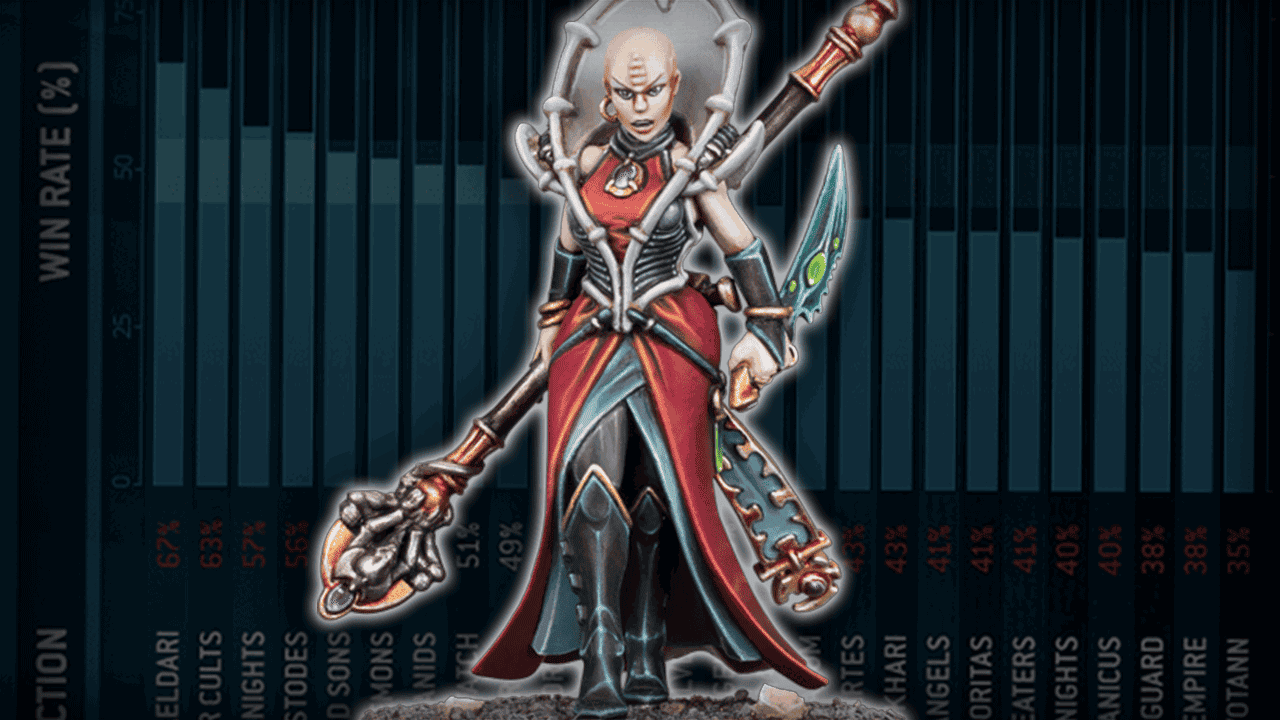
With their blend of ambush tactics, guerrilla warfare, and uncanny psychic powers, they make every game a thrilling exercise in outthinking and outmaneuvering the opponent. Ready to master the art of rebellion? Let’s look at what makes this faction tick and how to wield them like a true cult mastermind.
Strategies and Playstyles
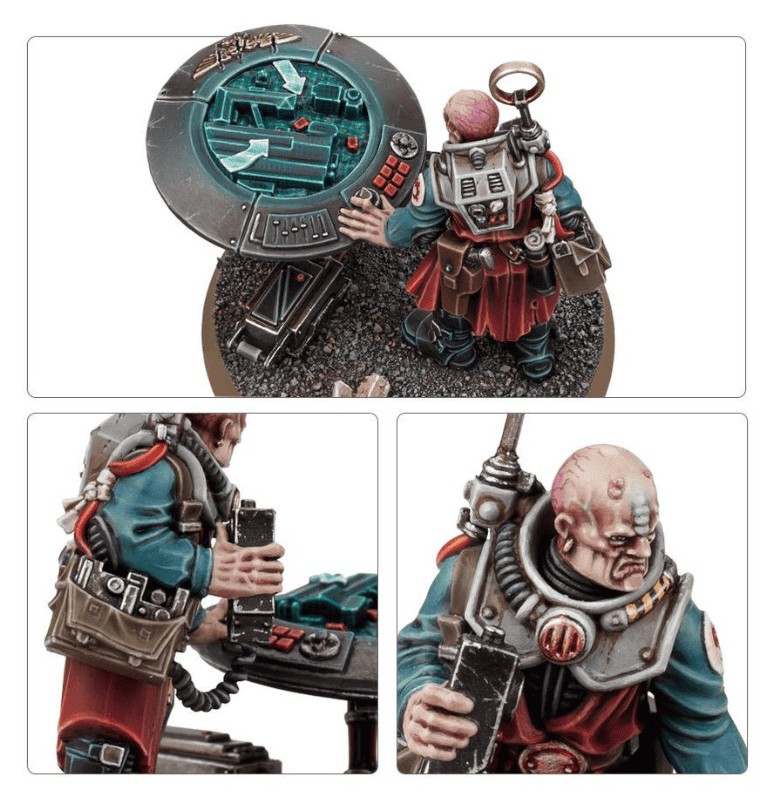
Use units that blend into the shadows and spring traps on unsuspecting foes, all while leveraging the psychic talents that give these cultists an otherworldly edge.
In Warhammer 40k, the Genestealer Cult combat patrol is your ticket to harnessing their playstyle in smaller skirmishes. It’s compact, versatile, and perfectly tailored to deploy the cult’s ambush tactics and hit-and-run strategies. Plus, think of how cool ambushes would look on the Cavill Amazon series!
Ambush Tactics

Timing is everything here. Coordinate ambushes to create layers of pressure. Force your opponent to make hard decisions—do they pivot resources to handle the immediate threat, or stick to their initial plan? The sheer disruptive potential of these tactics makes the cult a nightmare to face for any foe.
In the lore, these ambush tactics are a hallmark of Genestealer Cult warfare, used to overwhelm planetary defenses with swarms of insurgents and well-placed assassinations. Defeating them in lore often requires identifying their leaders and neutralizing them before the uprising spirals out of control.
Guerrilla Warfare in Tabletop Play
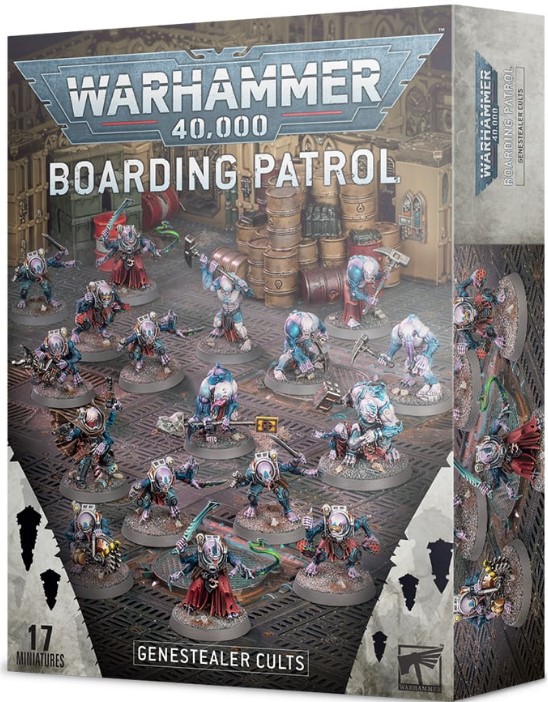
On the tabletop, this hit-and-run philosophy forces your opponent to constantly react, giving you the upper hand in controlling the game’s tempo. Want to channel that relentless guerrilla energy? Master movement phases and prioritize units with high mobility.
Leveraging Psyker Abilities
No Genestealer Cult force is complete without some psychic flair. Their Magus and Patriarch models bring serious psychic firepower, bolstering units and sowing chaos in enemy ranks. Powers like Mass Hypnosis can debilitate key threats, while Might from Beyond turns your close-combat units into true monsters.
In lore, these psychic abilities are part of what makes the cult so terrifying. Their connection to the Hive Mind grants them powers that can overwhelm the most stalwart defenders. On the battlefield, exploiting these abilities can turn the tide of a game, giving you an edge in both offense and defense.
Genestealer Cult Army Structure

At the heart of the cult lies its hierarchical organization, designed to infiltrate and overthrow entire planetary systems. From the Patriarch, the cult’s godlike leader, down to the lowliest Neophyte Hybrid, every member has a role in the rebellion. Units are specialized for ambushes, hit-and-run tactics, and psychic domination, making them as unpredictable on the tabletop as they are in the lore.
What sets them apart is their unique Cult Ambush mechanic, which lets units appear anywhere on the battlefield, keeping opponents guessing. This ability alone makes Genestealer Cults a favorite for players who enjoy outwitting their opponents with tactical misdirection and well-timed strikes.
Key Units and Characters
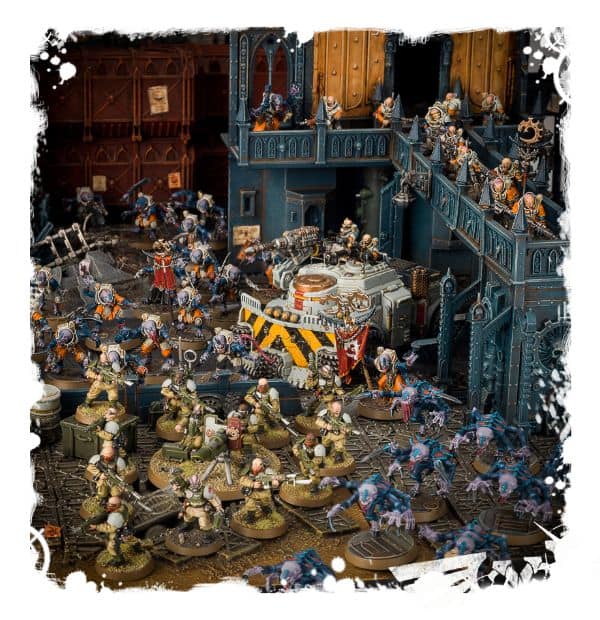
- Patriarch: This is the big boss, blending psychic might with monstrous melee capabilities. The Patriarch acts as both a linchpin in the army and a terrifying threat in close combat.
- Magus: If you like controlling the psychic phase, the Magus is your go-to. This character enhances your psyker abilities while providing buffs to nearby units.
- Primus: This commander specializes in guiding your ambushes, boosting the effectiveness of your strikes with precision bonuses.
- Purestrain Genestealers: The iconic shock troops of the faction, these melee monsters excel at tearing through enemy lines with speed and ferocity.
- Acolyte Hybrids: The Swiss Army knife of your force, these units can handle objectives, engage in melee combat, or disrupt enemy plans.
- Atalan Jackals: Mounted on bikes, these fast-moving units excel at guerrilla warfare, harassing the enemy and then disappearing before retaliation can strike.
Each unit serves a purpose, and the synergy between them is key to making your Genestealer Cult army a cohesive force.
To start playing them, you will need a Codex book or access to a reference site like Wahapedia, or the official Warhammer 40k army builder app (subscription required for most up-to-date rules.)
Genestealer Cult Combat Patrol: An Overview

On the tabletop, the Combat Patrol format is an excellent way to experience the Genestealer Cult playstyle without committing to a massive army. It offers just enough variety to experiment with ambush tactics, hit-and-run strategies, and even psyker shenanigans. Plus, the Combat Patrol size means you can master the art of Genestealer Cults subterfuge without being overwhelmed by larger battles.
In the lore, this size of force often represents the opening stages of a cult uprising—a small, focused strike team sowing the seeds of rebellion before the full might of the hive-mind arrives. On the battlefield, they’re just as sneaky, setting traps and whittling down the enemy’s forces with surgical precision.
Origins and Lore
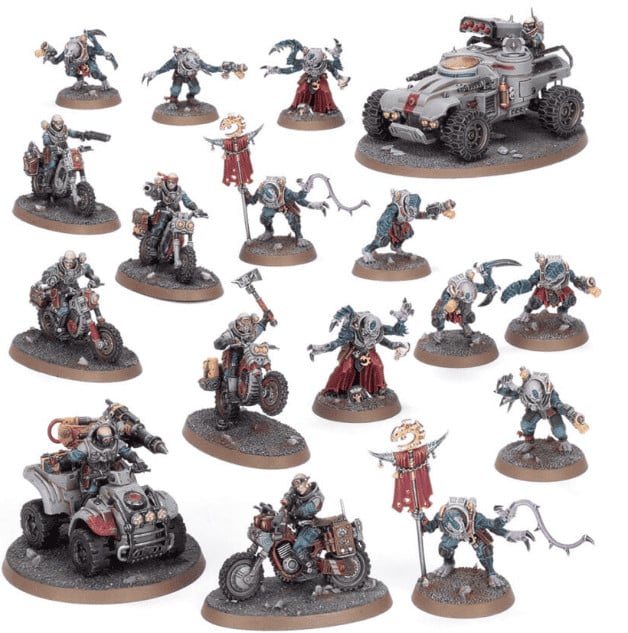
What sets the Genestealer Cult apart in the grimdark universe is their ability to remain undetected until it’s too late. By masquerading as oppressed workers or marginalized groups, they sow discontent, slowly turning the gears of rebellion. Over time, their ranks swell with hybrids—creatures that are part human, part alien—preparing for the day they rise up in service of their true master, the Tyranid Hive Mind.
How Genestealer Cults Are Created
Genestealer Cults begin with a single Genestealer, often referred to as the Patriarch, infiltrating a planet. This alien creature doesn’t rely on brute force; instead, it uses its genetic infection to create loyal followers (and drive them away from the Emperor). Through a process known as the Genestealer’s Kiss, the Patriarch injects its genetic material into a victim, compelling them to serve the cult.
These infected individuals don’t simply obey—they actively recruit others, becoming charismatic leaders in their communities. Over generations, the cult grows, producing hybrids that look increasingly human with each successive brood. By the time the fourth generation is born, they are nearly indistinguishable from ordinary humans, allowing them to infiltrate key positions in society undetected.
This insidious growth ensures the cult is deeply entrenched in its host society before anyone realizes the threat. By the time the uprising begins, the planet’s government, military, and infrastructure are already compromised.
Evolution of the Cult: From Insurgence to Overthrow
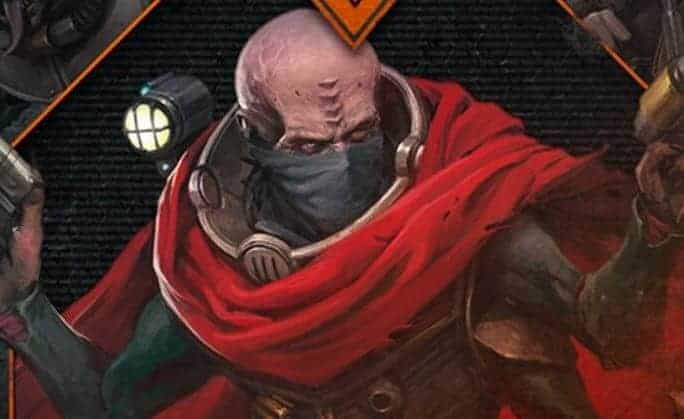
As their numbers grow, the cult begins preparing for the Day of Ascension. This is when the full rebellion occurs, with cultists rising up in a coordinated assault. The goal? To cripple the planet’s defenses just as the Tyranid fleet arrives.
On the tabletop, this evolutionary process translates into their unique playstyle. Genestealer Cult armies excel at guerrilla warfare, with units capable of ambushing enemies and disrupting their plans. Their ability to appear anywhere on the battlefield mirrors their lore’s theme of sudden, coordinated strikes.
How Are Genestealer Cults Defeated in Lore?
Defeating a Genestealer Cult is no easy feat. In the lore, these insurrections are notoriously difficult to crush because they operate in the shadows for so long. By the time the authorities realize the threat, the cult has usually spread too far to be eradicated easily.
The key to defeating them lies in targeting their leadership. Without the psychic connection provided by the Patriarch and other high-ranking members, the cult loses its cohesion, making it easier to dismantle. However, rooting out these leaders is easier said than done, as they are often hidden deep within underground lairs or shielded by layers of devoted followers.
In some cases, entire planets have been abandoned or destroyed because the Genestealer Cult infestation was deemed irreparable. The Imperium of Man, in its typical grim fashion, would rather burn a world to ash than risk letting the cult spread to neighboring systems.
Art and Design
Genestealer Cults are more than just a formidable force in Warhammer 40k—they’re a feast for the eyes. The faction’s art and design perfectly capture their unsettling blend of alien and human elements. From twisted hybrids to eerie underground lairs, everything about the cult’s aesthetic screams otherworldly menace. But there’s a method to this madness, and it’s as much about storytelling as it is about style.
Genestealer Cult Art: Visual Characteristics
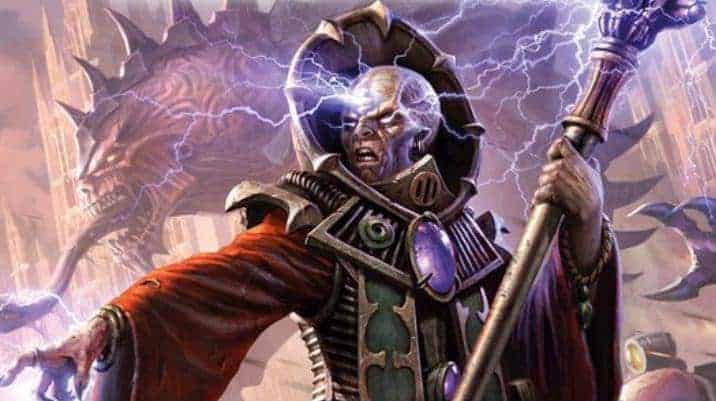
In official Warhammer 40k art, Genestealer Cultists often appear in utilitarian work gear, heavily modified with alien-inspired details. You’ll spot exposed claws, chitinous armor plates, and a disturbing amount of extra limbs. The cult’s underground lairs, depicted in artwork, are a mix of industrial machinery and organic growths, reinforcing their dual identity as both human and alien.
The Patriarch, as the symbolic and literal heart of the cult, embodies this theme perfectly. With its grotesque size and Tyranid-like features, it’s both a terrifying creature and a symbol of the cult’s hive-mind devotion. These visual elements combine to tell the story of a faction that is both hiding in plain sight and irreversibly alien at its core.
Miniature Model Techniques and Tips
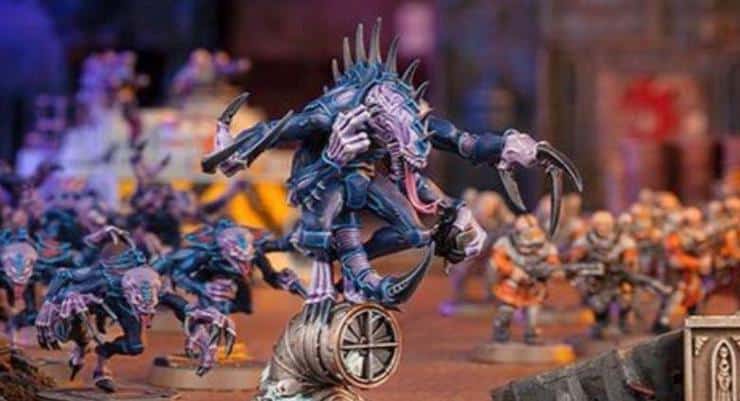
1. Focus on Muted Colors with Alien Highlights
Genestealer Cult armies look great in earthy tones that reflect their mining and industrial roots. Think rusty reds, browns, and greys. To highlight their alien features, add pops of color like Tyranid-style purples, blues, or bone whites. These contrasts emphasize their hybrid nature while maintaining a cohesive palette.
2. Weathering and Battle Damage
These cultists aren’t polished soldiers—they’re rebels rising from the mines. Use weathering techniques to add realism. Sponge weathering can create the appearance of chipped paint, while washes and pigments simulate grime and dirt. The more battered they look, the more authentic they feel.
3. Detail Work on Hybrid Features
Take your time with the alien elements. For claws, carapaces, and extra limbs, layer your paints to create a sense of depth. Start with a dark base coat, highlight with lighter tones, and finish with a glaze to blend the layers smoothly.
4. Dynamic Bases
Your models aren’t just cultists—they’re part of an uprising. Reflect their story in the bases. Incorporate industrial debris, glowing Tyranid growths, or even mining tools to give each miniature a sense of place.
5. Spotlight the Patriarch
As the centerpiece of the army, the Patriarch deserves extra attention. Consider using blending techniques or even lighting effects (like Object Source Lighting) to make it the star of your collection.
Bringing It Together
From their eerie design to their narrative-driven aesthetics, Genestealer Cults are a painter’s dream. Each model is an opportunity to tell a story, capturing the creeping horror of their rise and the grim resolve of their followers.
Genestealer Cult Lore
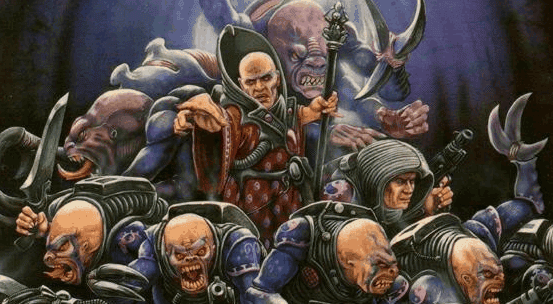
Overview of the Genestealer Cult in Warhammer 40k
At their core, the Genestealer Cults are all about subversion. It starts with a single Genestealer, an alien organism that doesn’t conquer by force but by infection. The Genestealer spreads its genetic influence through what’s called the Genestealer’s Kiss, implanting its biological essence into a host. This infected individual becomes the first link in a growing web of control, their mind twisted to absolute loyalty toward the alien Patriarch.
The Patriarch, a bloated yet terrifying psychic figure, serves as both the spiritual and tactical leader of the cult. Beneath it, the cult grows in secrecy, blending into the population while spreading discontent. Through subtle acts of sabotage, propaganda, and rebellion, they weaken society’s foundations, paving the way for their ultimate goal: total planetary domination in service to the Tyranid swarm.
On the battlefield, this lore translates into a playstyle focused on ambush tactics and deception. Units appear seemingly out of nowhere, hitting hard before fading back into obscurity. It’s a style that rewards clever strategy and an ability to adapt mid-game—perfect for players who enjoy outthinking their opponents.
Significance and Role within the Universe

Their significance lies in their ability to take ordinary people and turn them into devoted insurgents. These aren’t alien conquerors arriving in massive ships; they’re miners, factory workers, and other overlooked members of society. This makes them one of the most relatable factions in Warhammer 40k, even as they become increasingly alien with each generation.
But what makes them truly terrifying is their timing. Genestealer Cults rarely strike in isolation. Their rebellions are carefully planned to coincide with the arrival of a Tyranid fleet. This is when the Day of Ascension occurs—a euphemistic name for the day the cult reveals itself, unleashing its forces in a coordinated uprising. The planet’s defenders, already weakened by sabotage and internal strife, are left scrambling to respond just as the Hive Mind descends to consume the world.
In the lore, the question of how are Genestealer Cults defeated is a grim one. Rooting out an infestation often requires draconian measures. Entire cities—or even planets—may be sacrificed to stop the spread of the cult. Targeting key figures like the Patriarch can disrupt their coordination, but even then, it’s often too late. The shadow of the Hive Mind looms large, and once a cult has taken hold, it’s only a matter of time before its alien masters arrive.
FAQs & Influence on Warhammer 40K Lore and Gameplay

Q: What’s the core appeal of the Genestealer Cults in Warhammer 40k?
The appeal lies in their duality. They’re relatable as ordinary people—miners, factory workers, and other downtrodden members of society—rising against oppressive regimes. At the same time, their alien transformation adds an eerie, almost tragic twist to their rebellion. For players, they offer a tactical playstyle that rewards cunning, creativity, and adaptability.
Q: How are Genestealer Cults defeated in lore and on the tabletop?
In lore and on the tabletop, many people ask how Genestealer Cults are defeated, which is no small feat. Because they operate in secrecy for generations, rooting them out often requires extreme measures, such as exterminatus-level interventions or mass purges. Their psychic connection to the Patriarch means cutting off the head can sometimes cripple the body, but even that isn’t a guarantee of success. On the tabletop, asking how Genestealer Cults are defeated might be as tough as in the lore… They have been dominating the meta for some time.
Q: Why are Genestealer Cults so iconic in the Warhammer 40k universe?
Their story isn’t just about alien invasion—it’s a commentary on oppression and the desperation of those who feel powerless. Coupled with their eerie ties to the Tyranids, they’re a faction that blends personal, relatable stories with galactic-scale horror.
Future of Genestealer Cults in the Expanding Universe
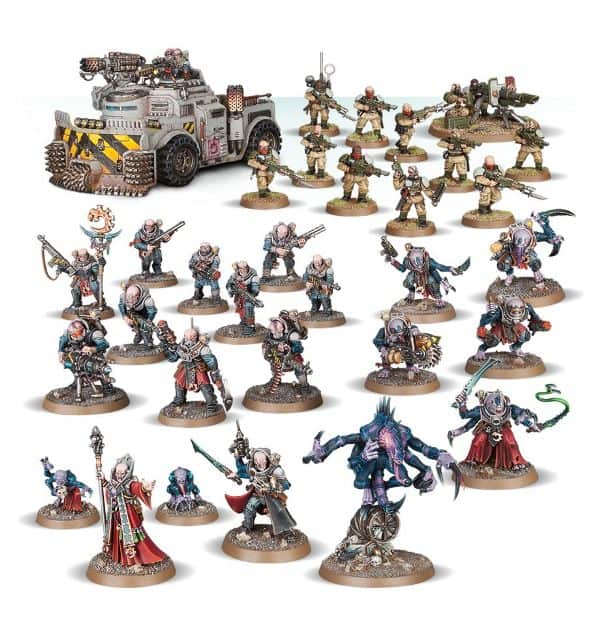
The recent emphasis on smaller skirmish games, like Combat Patrol, has been a boon for Genestealer Cult players. Their intricate models and tactical gameplay shine in these formats, making them a perfect fit for missions that rely on ambushes, stealth, and sabotage.
With the ongoing expansion of Tyranid lore and the constant threat of Hive Fleets looming over the galaxy, the Genestealer Cults remain a vital piece of the Warhammer 40k puzzle. They represent the quiet before the storm—the hidden danger that grows unchecked until it’s too late. And having more people than ever before asking, how are Genestealer Cults defeated in the lore and on the tabletop?
On the tabletop, the faction continues to thrive, with frequent updates to their codex and a growing player base. New models and rules often emphasize their narrative strengths, ensuring that they remain a popular choice for players who love strategy and story in equal measure.
Warhammer 40k Factions Explained: A Complete Guide to Every Army
What do you think about the Necrons in Warhammer 40k? Do you like the playstyle, Combat Patrol, lore (and maybe some tips on how the Genestealer Cults are defeated), and units in 40k?
